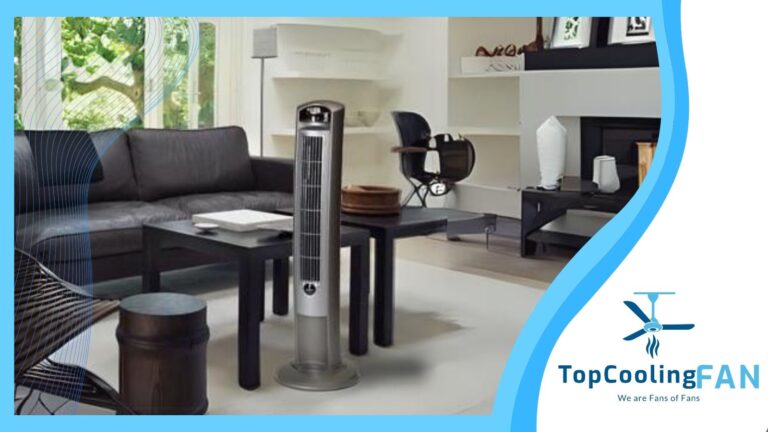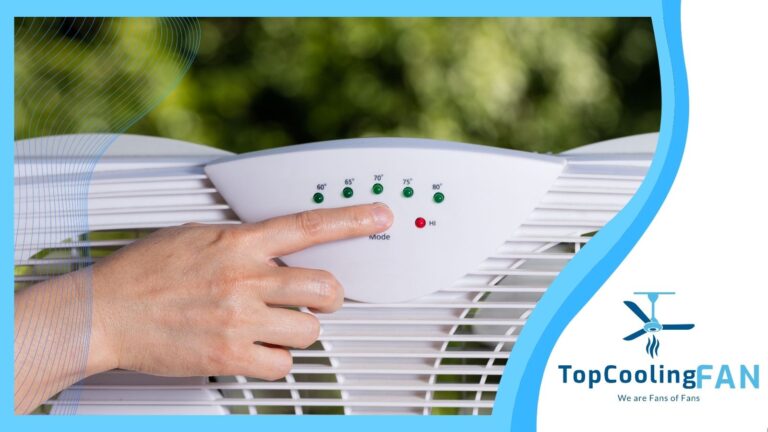How to Install Window Fan: A Step-by-Step Guide
Installing a window fan is a simple and effective way to enhance the circulation of air in your home. It can help to cool a room efficiently by drawing in fresh, cooler air from outside or by expelling warm air from inside.
Depending on the model, window fans can come with a range of features such as adjustable speeds, reversible airflow, and thermostats. Proper installation ensures that the fan operates safely and maximizes its performance.

When setting up a window fan, it is important to select the appropriate window, taking into consideration factors such as the direction of airflow and the location of the window.
The fan should be placed securely in the window frame, supporting it with a sturdy casing if required. Additionally, extendable side panels may be used to seal the space around the fan, preventing air from leaking through the gaps.
For optimal cooling, some recommend positioning inward-blowing fans on the shady side of the house and outward-blowing fans on the sunny side, regardless of the number of stories in the home.
The process typically involves opening the window, placing the fan in position either horizontally or vertically, and then closing the window to secure it in place.
Expansion panels on either side of the fan can then be pulled out to fit the width or height of the window opening, providing a snug fit. This ensures that the fan is stable and minimizes outside noise and the entry of insects. It also helps to utilize the fan’s full potential in cooling or ventilating a room.
Understanding Window Fans
Window fans are a cost-effective solution for improving indoor air quality and air circulation in a room. They work by pulling in cool outside air or exhausting stale indoor air, depending on their setting.
Here are some key aspects to understand about window fans:
Cooling: Window fans are particularly beneficial during cooler evenings or in climates where the outside air temperature drops significantly at night. They bring in the cool air from outside to lower the indoor temperature naturally.
Airflow Direction: Users have the option to set their window fan to either intake fresh air, exhaust indoor air, or do both simultaneously with dual-function models.
Air Circulation: Beyond merely cooling, window fans help maintain a steady airflow which can be essential for rooms that have poor ventilation, ensuring a supply of fresh air and reducing the risk of airborne contaminants.
Installation: Placement can affect performance. It’s recommended to install the intake fans on the shady side of the house and exhaust fans on the sunny side to increase efficiency.
Positive Pressure: By using window fans to create a positive pressure system, homeowners can push out hot, stale air and replace it with fresh, cool air.
Here’s a concise table summarizing the primary functions of window fans:
| Function | Description |
|---|---|
| Cooling | Lower indoor temperatures by bringing in cool outside air. |
| Exhausting | Remove stale air from interiors to improve air quality. |
| Intake | Pull in fresh external air for better air circulation. |
| Positive Pressure | Force out indoor air to enhance indoor environment. |
In summary, window fans are an easy-to-use and energy-efficient way to improve comfort and air dynamics inside a home.
Choosing the Right Window Fan
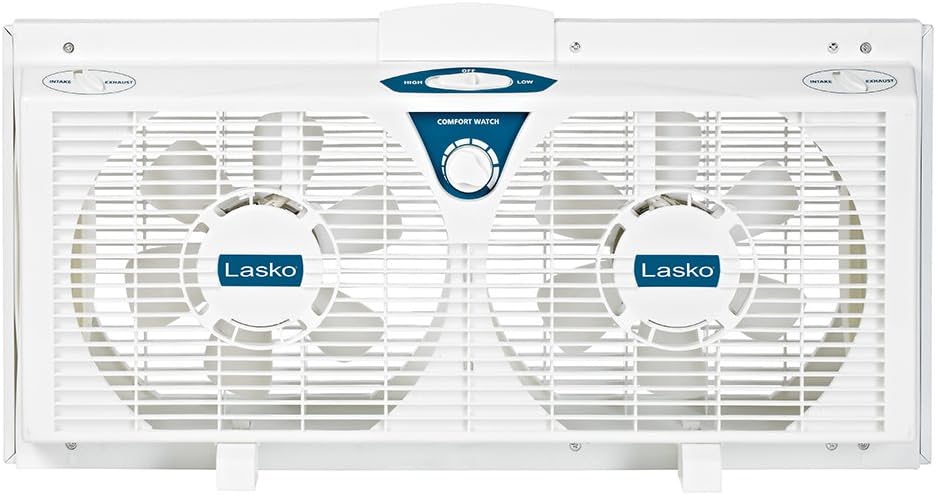
When installing a window fan, it’s essential to select the right size and features to meet one’s needs, such as motor efficiency and noise level.
Determining the Appropriate Size
The size of the window fan is critical as it must fit snugly within the window frame.
Measure the window’s height and width accurately and consider a fan with extender panels to ensure a custom fit.
One must look for a fan that will fit most standard windows to avoid gaps that can reduce efficiency.
Features to Look For
A good window fan should offer multiple features to improve usability.
Look for a fan with built-in thermostat for automatic temperature control. Additionally, multiple fan blades and speed settings add versatility, while reversible airflow options can draw fresh air in or expel stale air.
Motor and Airflow Specifications
The motor determines the fan’s performance and durability.
A motor with a high CFM (cubic feet per minute) rating indicates a larger fan capable of moving more air, which is crucial for effective ventilation.
Ensure the motor is designed for long-lasting operation and consider models with energy-efficient motors for cost-saving benefits.
Noise Considerations
Noise level is an important factor, especially in living spaces and bedrooms.
A fan’s noise is rated in decibels (dB), and one with a lower rating will be less intrusive. Look for fans specifically designed to operate quietly without sacrificing airflow.
Pre-Installation Preparation
Before one begins installing a window fan, it’s crucial to prepare the work area and gather all necessary tools.
Ensuring the window dimensions are measured accurately can make the installation process much smoother. A clean installation site prevents any debris from hindering the process.
Gathering Necessary Tools
One will need a measuring tape, screwdriver, and a level to ensure a proper installation.
Here’s a simple list to help one verify that they have all the required items:
- Measuring tape: For precise measurements of the window.
- Screwdriver: To secure the fan with the included screws.
- Level: To ensure the fan is perfectly horizontal.
Measuring the Window
Using a measuring tape, one should carefully measure the height and width of the window opening where the fan will be placed.
It is important to note that the fan should fit snugly within the opening without excessive gaps on the sides.
Cleaning the Installation Area
It’s essential to clean the window area to remove dust and debris.
Any particles left in the installation site can cause issues with the fan’s functionality or noise levels.
Start with wiping the sill and frame down with a damp cloth, then dry the area thoroughly before proceeding with the installation.
Installation Process

Installing a window fan efficiently requires attention to securing the unit, ensuring proper insulation, and adhering to electrical safety standards. These steps can enhance the fan’s performance and extend its lifespan.
Securing the Fan in Place
To install a window fan, one must first ensure the window opening is wide enough to accommodate the unit.
The fan should fit snugly within the window frame to avoid unnecessary vibration and movement.
One uses screws or the brackets provided to firmly secure the fan in place. It’s important to double-check that the fan is levelled and stable once installed.
Ensuring Insulation and Air Seal
Post-installation, it is crucial to address any gaps between the fan and the window frame to prevent air leaks.
Application of caulk or silicone sealant around the edges of the fan achieves an air-tight seal.
For additional insulation, one may consider adding weatherstripping around the fan. This step provides an effective barrier against external elements, reinforcing the insulating effect.
Power Source and Electrical Safety
Connecting the window fan to a power source must be handled with safety precautions in mind.
Ensure the fan’s plug reaches the outlet without strain on the cord, and the fan operates correctly.
It is recommended to plug the fan directly into an outlet rather than using an extension cord to prevent electrical hazards.
Optimizing Window Fan Usage
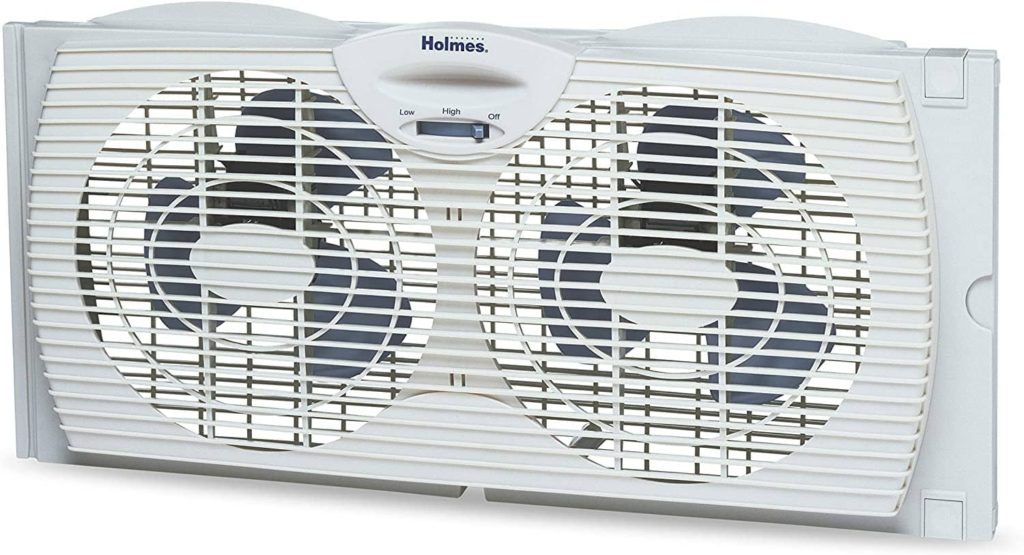
Before diving into specific techniques, it’s important to understand that optimizing window fan usage hinges on adjusting fan settings, utilizing multiple fans for effective airflow, and strategic fan placement to ensure energy-efficient operation.
Adjusting for Optimal Performance
To achieve optimal performance, one must frequently adjust the fan’s speed according to the room temperature and desired comfort level.
Fans equipped with variable speed settings can be tuned to maintain a steady airflow, balancing the cooling effect with energy consumption.
This ensures that the fan works effectively without over-exerting and consuming excessive power.
Using Multiple Fans for Ventilation
Positioning multiple fans throughout a space can create a cross breeze, which enhances ventilation.
One fan should face outwards to expel hot air, while another on the opposite side of the room draws in cool air from outside.
Not only does this efficiently lower the temperature, but it also promotes a continuous and refreshing airflow.
Placement and Direction for Efficiency
For maximum efficiency, placement and direction are crucial.
Fans should be mounted on windows where they can capitalize on natural cool air—typically on the shady side of the house for intake fans, and on the sunny side for exhaust fans.
This strategic placement allows for the natural cooling effect of the outdoor air, reducing the amount of work your fan needs to do and cutting down on energy costs.
It’s also helpful to point fans outward on the higher stories to draw up and remove the hot air that naturally rises, thereby enhancing the overall cooling effect.
Maintenance and Troubleshooting

Proper maintenance and timely troubleshooting ensure the longevity and optimal functioning of a window fan. One should not overlook these aspects if they want to get the most out of their fan.
Regular Cleaning and Upkeep
Cleaning a window fan is essential to its maintenance as it prevents dust and dirt from impeding the fan’s performance. They should carefully unplug the window fan before starting any cleaning process.
One method is to use a soft brush or cloth to gently remove dust from the blades and body. For a thorough cleaning, it’s recommended to disassemble the fan following the manufacturer’s instructions and wipe down all parts.
Troubleshoot Common Issues
When they encounter problems with a window fan, they can often address common issues themselves before seeking professional help. First, ensure the fan is properly plugged in and that the electrical outlet is functional.
If the fan is not powering on or if it’s making unusual noises, it’s wise to inspect the blades for obstructions or damage. They should also check that the fan is correctly seated within the window frame as an improperly installed fan can lead to vibrations and noise.
Additional Considerations
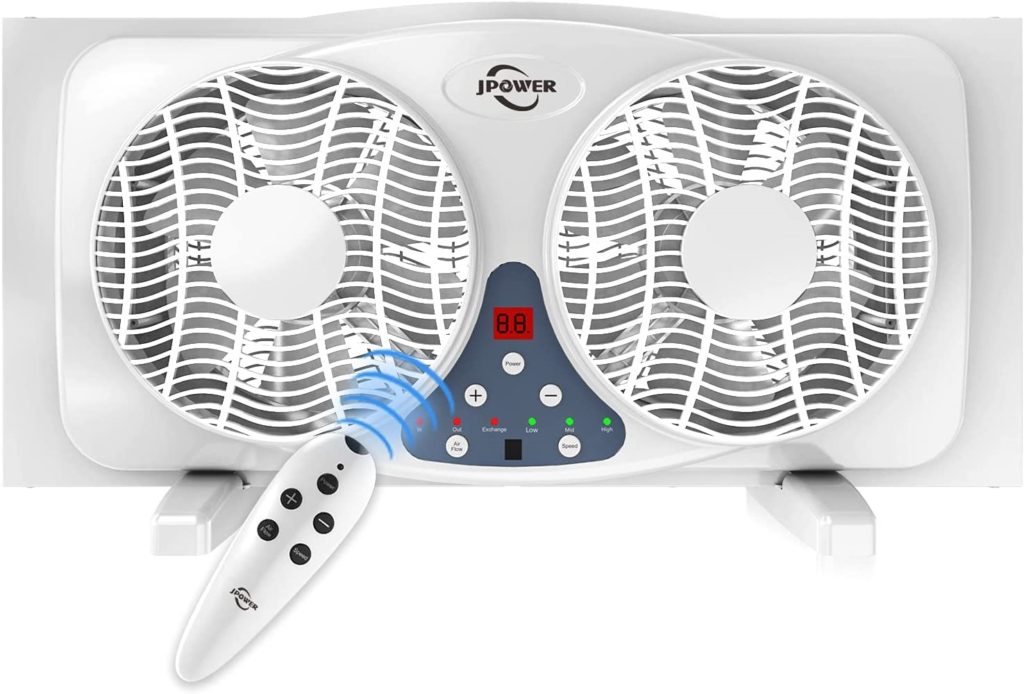
Before installing a window fan, it’s essential to consider the external factors that may affect its operation, as well as to be aware of alternatives that could better suit specific conditions.
Factors like environment, humidity, and heat can influence the efficiency of a window fan. Additionally, the specific room, such as a kitchen or bathroom, may require a particular type of ventilation.
Dealing with External Factors
In areas with high humidity or moisture, window fans need to be installed with care to avoid drawing in damp air that can exacerbate mold problems.
For rooms prone to odors, like kitchens, a fan with reversible functions can be beneficial for expelling smells quickly.
Homeowners should ensure that fans placed on the sunny side of the house have features to minimize the intake of hot air. This makes the tool a cost-effective way to complement an air conditioning system, leading to home improvement and energy savings.
Window Fan Alternatives
When a window fan isn’t sufficient for certain spaces such as bathrooms or parking areas with limited ventilation, considering an extractor fan can be more appropriate.
These are particularly well-suited to the bathroom environment where removing moisture is critical. In contrast, a simple box fan can be a versatile and cost-effective choice for most rooms but may lack the ability to expel internal air.
Where more intense cooling is needed, a portable air conditioner may be a better option, particularly in spaces that must be kept at low temperatures or free from external pollutants.
Final Thoughts and Recommendations
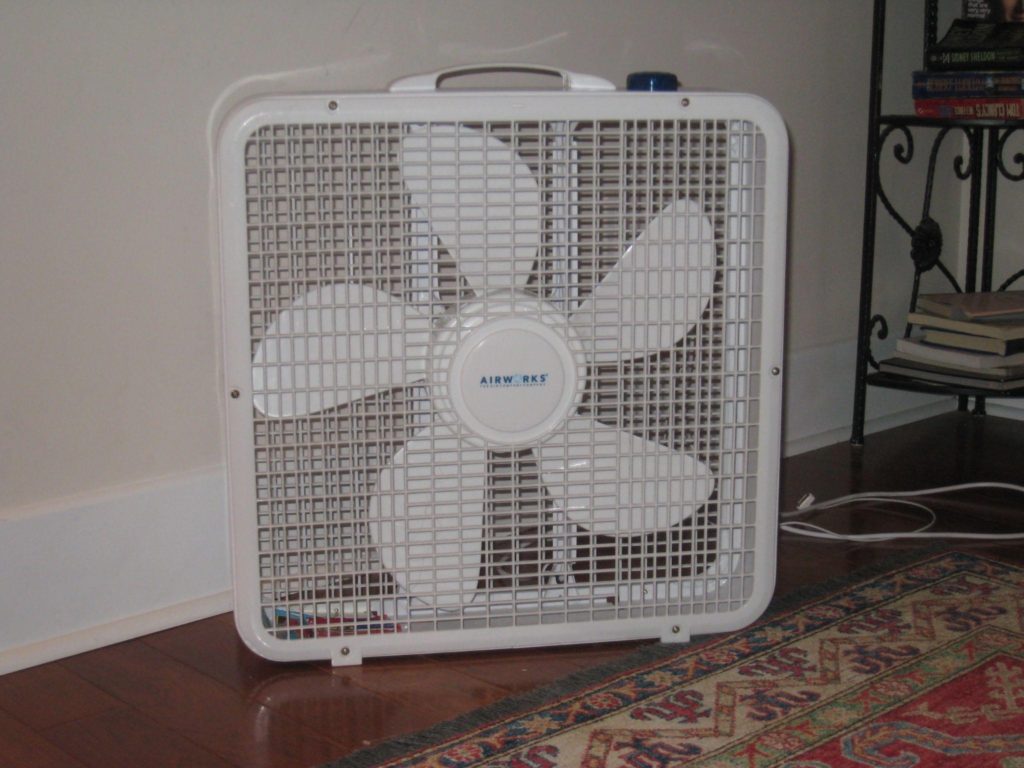
Installing a window fan is an effective way to enhance indoor air quality and provide a cost-efficient cooling solution. Let’s recap the benefits and best practices to get the most out of your window fan installation.
Summarizing Key Takeaways
- Fresh Air: Window fans play a crucial role in the exchange of indoor and outdoor air, ensuring a continuous flow of fresh air.
- Cooling and Ventilation: They are excellent for creating a cooling breeze, which can be a more energy-efficient option than air conditioning on less sweltering days.
- Indoor Air Quality: Regular use of a window fan can help to improve ventilation, which is essential for maintaining good indoor air quality.
- Energy Efficiency: When utilized correctly, especially during cooler parts of the day, window fans can contribute to reduced energy consumption and lower electricity bills.
Enhancing Home Environment
- Strategic Placement: For maximum effect, install inward-blowing fans on the cooler, shady side of the dwelling. Outward-blowing fans should face the sunnier aspects.
- Operational Timing: Utilizing window fans during evening or early morning hours can significantly enhance their cooling efficiency. This takes advantage of cooler outdoor temperatures to reduce indoor heat.

